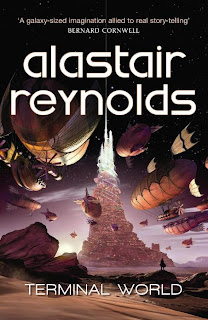
Discover their potential, including an appraisal of the new Microsoft Surface devices, in my Micro Mart issue 1232 six page feature article - out today.
Here are a few extracts:
Laptops are essentially a portable desktop machine, complete with powerful processor, large storage capacity, enhanced connectivity, well-specified operating systems and fully-featured application software. Their owners need a device that supports a wide variety of construction-focussed activities. A device that can create and edit office documents, write blogs and articles, fabricate and process images, produce and manipulate videos, design and build websites, or develop and test software apps.
However, a tablet is quite a different proposition. It's a consumption-centric device, aimed primarily at leisure and entertainment activities. Tablet owners want to swipe through photos, kick back with a video, catch up on missed TV programmes, listen to music, play games, surf the web and read ebooks. The smaller 7 inch screen versions are ideal when reclining on the couch, visiting a coffee shop, travelling by train and packing the holiday suitcase. Tablets with high definition 9 to 11 inch screens are more suited to business professionals and researchers, who wish to read documents, magazines and websites without recourse to frequent zooming in and out.
A successful hybrid device must cater for both construction and consumption activities. It's quite a challenge. Any device attempting to run office suites, software development tools or high-end image and video manipulation applications must have a reasonable screen size, adequate CPU and graphics horsepower, plus a good quality keyboard. Yet, lightness, portability, touch-centric operation and long battery life are the prerequisites for tablets you can pop into your bag as you head out of the door.
However, a tablet is quite a different proposition. It's a consumption-centric device, aimed primarily at leisure and entertainment activities. Tablet owners want to swipe through photos, kick back with a video, catch up on missed TV programmes, listen to music, play games, surf the web and read ebooks. The smaller 7 inch screen versions are ideal when reclining on the couch, visiting a coffee shop, travelling by train and packing the holiday suitcase. Tablets with high definition 9 to 11 inch screens are more suited to business professionals and researchers, who wish to read documents, magazines and websites without recourse to frequent zooming in and out.
A successful hybrid device must cater for both construction and consumption activities. It's quite a challenge. Any device attempting to run office suites, software development tools or high-end image and video manipulation applications must have a reasonable screen size, adequate CPU and graphics horsepower, plus a good quality keyboard. Yet, lightness, portability, touch-centric operation and long battery life are the prerequisites for tablets you can pop into your bag as you head out of the door.
Take the Surface device case for example. It's thin and light, constructed from a unique VapourMg material. VapourMg combines the strength and lightness of magnesium with an industry-first process that forms a tough, scratch-resistant, subtly tactile finish. It has a superbly designed, integrated flip-out stand with a high-quality, dependable hinge mechanism - all in the same VapourMg material. Despite the sleek form it's still endowed with a good selection of connectivity, including full-sized USB ports.
Then there's the snap-on covers, complete with integral keyboard and trackpad. They're attached magnetically in an easy snap-on operation, yet hold securely. They protect the screen and give a reassuring 'book-like' feel when carrying the device around.
Then there's the snap-on covers, complete with integral keyboard and trackpad. They're attached magnetically in an easy snap-on operation, yet hold securely. They protect the screen and give a reassuring 'book-like' feel when carrying the device around.
The crux of the Windows 8 architecture is its dual personality. The classic desktop mode still exists to deliver that familiar productive experience and ability to run the powerful software required for office, web, multimedia and software development activities.
However, the desktop is now supplemented by a new Metro-style user interface. This UI offers a radically different, colourful, touch-friendly user experience. Gone are the fiddly menu options, scroll bars and general multiple window clutter. They're replaced by a collection of horizontally sliding tiles supporting swish-able panels, pinch-able zooms and gesture invoked operations.
The Metro-style UI is attractive, clean and fast. The 'live tiles' deliver real-time, dynamically-updated content, such as weather reports, RSS feeds, new email messages and tweets. It successfully creates the sort of laid-back, consumption-mode experience that's best enjoyed while reclining in a comfy chair, lolling around on the sofa, or sipping your cappuccino.
However, the desktop is now supplemented by a new Metro-style user interface. This UI offers a radically different, colourful, touch-friendly user experience. Gone are the fiddly menu options, scroll bars and general multiple window clutter. They're replaced by a collection of horizontally sliding tiles supporting swish-able panels, pinch-able zooms and gesture invoked operations.
The Metro-style UI is attractive, clean and fast. The 'live tiles' deliver real-time, dynamically-updated content, such as weather reports, RSS feeds, new email messages and tweets. It successfully creates the sort of laid-back, consumption-mode experience that's best enjoyed while reclining in a comfy chair, lolling around on the sofa, or sipping your cappuccino.
Purchase Micro Mart back issues in a variety of formats at the Zinio website for just £1.49 each.
Read more Microsoft analysis posts.


